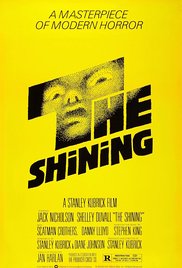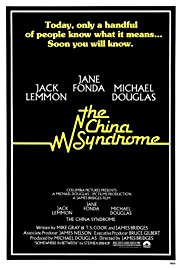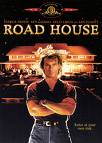‘Blame Detroit,’ not the devil:
In ‘The Amityville Horror,’ the bad guys take cash or credit
When you hear the name “Amityville,” you think of ...
Yep.
That’s a shame. No town in American history, not even Salem, is as tainted by a crime as Amityville. Check that — it’s not even tainted by the crime, but someone’s imagination run amok. That’s the downside of pop culture.
“The Amityville Horror” is much stronger as a logo or a title than a movie. There’s far more promise than payoff, which coincidentally is a check-writing subplot. The idea of the movie sounded intriguing. It was one of many 1970s supernatural mysteries. Maybe the movie has some answers. In most of those ’70s mysteries, the public was simply being played. Keep that in mind.
Probably most horror books and films are influenced by a real event. Sadly, there’s a lot to choose from. The actual horror of “Amityville” is too real. It took place in November 1974 when a young man killed his parents and four young siblings at the home. He claimed he heard voices. The story made national news; a photograph of Ronald “Butch” DeFeo Jr. under arrest appeared on the front page of the Chicago Tribune two days after the slayings. Case closed. Fairly quickly, the story should’ve faded from national consciousness.
But no.
It’s an incredibly sad tragedy. Children gunned down in their beds. But when the perpetrator is a relative, public mourning takes on a different tone. It’s no longer “This could’ve happened to me,” but “What in the world went wrong with that family?” It’s acknowledged that 112 Ocean Ave. sold below market because of the crime. Most saw stigma. Some saw opportunity.
Whether George and Kathy Lutz ever encountered haunting phenomena during their 28 days (the film has it at 21) in Amityville doesn’t matter, according to the reviews of both Roger Ebert and Gene Siskel. “The question isn’t so much whether those terrible things really happened as whether ... they’ve been made into an entertaining movie,” Ebert writes in his 1½-star review, and Siskel bluntly in his 2-star opinion states that “it makes little difference to moviegoers” if the story is even true. That is pretty much the carte blanche that Ebert gives “JFK,” a movie that has much in common with “Amityville.” On “JFK,” released a dozen years after “Amityville,” Ebert bestows 4 stars with the reasoning that “This is not a film about the facts of the assassination, but about the feelings.”
Jim Garrison, meet George Lutz. In a review oozing as much skepticism as the blood and slime from the Lutzes’ walls and toilets, Ebert nevertheless says he “had a couple of beers” with George Lutz at LAX and found him a “totally believable person.” Yet one of the interesting things about George’s story is that during the 28 days of this supposed horror, the police were never called, and neighbors knew nothing about it. Subsequent residents of the home reported no supernatural fright. Nor did the home’s previous occupants, presumably the group most likely to notice the evil. The Lutzes must’ve caught the demons at the wrong time.
Do people feel there’s some sort of cover-up regarding the massacre in “Amityville”? Or is it a satire on people’s interest in the supernatural? The movie introduces us to the house by re-creating Butch DeFeo’s bedroom-to-bedroom stalking. This is an odd approach, because it’s the strongest drama of the movie and compared with that opening, the Lutzes get off way easy. Nobody in the house ever comes close to dying. People’s complaints include flu-like symptoms, being cold, doors and windows shutting. The villains/demons/satans use flies, not killer bees, and are even willing to take cash just to get people to leave. (But no one who actually lives in the house ever reports cash missing.)
The demons don’t seem to have much authority outside the walls of the home, except for that time they put Father Delaney’s car on Autopilot, though it’s never explained why they mess with the priest’s car but not with George’s. If they have such a problem with Father Delaney, they could probably do worse things than cracking the sculptures high up over his head.
The Lutzes did not write their best-selling book. That was done by Jay Anson, a writer whose Wiki page is so slight, it mentions only one other work, another haunted house story apparently published after The Amityville Horror. The Wiki page for The Amityville Horror in a few places calls the book a “novel,” even though the cover image says “A True Story.”
Pauline Kael apparently never reviewed “The Amityville Horror” but did see it, as she referenced it several times in commentary about other films. An “unbelievably clunky script,” Kael writes, adding that the family in the movie is “ludicrous” and “you didn’t care what happened to those people.” But Kael praises Margot Kidder, stating that in this movie, she may “seem the only smart person in the cast.”
Kidder, as Kathleen Lutz, is probably the “Amityville” equivalent of what Roger Ebert sometimes called The Reliable Observer, the character of sound, unbiased judgment whom the audience can trust. Half the characters in this film are going hysterical over what they experience at the house; the other half are completely oblivious. Kathy for a while shrugs at supernatural claims but gradually notices changes in George’s behavior and that of the children. When she agrees it’s time to go, it’s time to go.
With numerous close-ups, Kidder is gorgeous and a great choice for this movie, she is more “real” in this film than in her stint as Lois Lane. But she is not vulnerable enough; she never conveys the fright that should be standard for this role. She more resembles Jodie Foster’s Clarice in “Silence of the Lambs,” the heroine who will try to straighten this out. Co-star James Brolin doesn’t convey the fright either, because somehow according to the script, he’s maybe a perpetrator and victim at the same time, a bizarre sort of Patty Hearst experience; he seems to yo-yo from sick and out of it to rational problem-solver quite often in the 21 days he spends at this home. Initially, he looks like Michael Landon, then morphs into a sweating Mac Davis. Curiously, the movie shows both Kidder and Brolin in gratuitous underwear shots, at different points in the movie, apparently so we know that the demons aren’t impressed. The kids are not only not scared, at least one of ’em’s in on it.
Originally asking Father Delaney to come over for a blessing, the family is somehow prevented by both the demons and the Church from making contact with him. So George, like any smart person, turns to the library for answers. He finds a book on local supernatural lore and sneaks it out of the library in the crotch of his pants, apparently so that no one (either local gossipers or the demons themselves) will know he’s checking it out. He takes the book to the Witches Brew bar (yes, where the bartender claims Ronald DeFeo Jr. was sitting just before his arrest) and shows it to his friends. One of those friends, Carolyn, concludes from the book, “You’re living on some sort of special ground. Devil worship. Death. Sacrifice.” It seems John Ketchum, run out of Salem in the witch trials, built the house that George is living in. “There’s one simple rule,” Carolyn tells George, which is, “Energy cannot be created or destroyed. It can only change forms.” OK. That’s the end of our explanation for why they’re sorta messing with George and really messing with the priest and the sitter but not messing with the kids. Dalton actually had three simple rules in “Road House,” which are, Expect the unexpected, Take it outside, and Be nice, all of which would’ve served George well.
Is it possible that “Amityville” is just a grim spoof about self-fulfilling prophecies and belief in the supernatural? If so, it’s too cheap of a hook, too much of a crutch, like a movie showing all kinds of bad stuff and then concluding it was a dream. The moviemakers slip in a bit of an “out” by indicating George is taking on financial strain by buying the house; maybe it’s that pressure and not demons that is driving him crazy. Priests chuckle about the real reason for a car disaster. “I’d blame Detroit a lot faster than the devil. Seems like every month, there’s some kind of recall.” (You’d think the Church leaders, hearing Father Delaney’s statements, would at least visit the home to see for themselves.) The worst violence depicted in the movie is not actually happening, but dreamt. It seems like “Amityville” is trying to have it both ways, promising scares while admitting maybe it wasn’t really that scary.
Rod Steiger, who had the highest stature of the cast at that time, has a headache for a couple hours that’s painful to see his character struggle with, and for reasons unclear, he doesn’t seem too interested in telling the Lutzes about the trouble they’re in and declines to attempt any Father Merrin-like heroics. All the place seems to need is a good exorcism. Apparently, the movie’s depiction of all of this mayhem beginning when the priest is asked to bless the house matches the account of George Lutz.
The villain is not the house, though maybe it seems like it. In fact, the house is the biggest victim. Ebert writes that the villain is some kind of “presence” that “doesn’t have a shape or a face or a personality.” It’s good at creating thunderstorms and slamming doors and windows. Its orders for Father Delaney, different but delivered similarly to Ray Kinsella in the “Field of Dreams” cornfield, are to “Get out,” a foreshadowing of the ending, but those words are heard only after Delaney is lured upstairs with the sounds of giggles. (He just thought he’d enter someone’s private home and wander around the place.) Curiously, the movie poster features the phrase “For God's sake, get out!” entirely in quotes, which is not a full quote in the movie.
It’s unclear whether the “presence” wants George to get out also; sometimes the doors and windows blast open; other times they lock shut. The “presence” for some reason torments a babysitter, which would either be a message to George to get out or a reminder that babysitters are very common horror movie targets. The babysitter’s parents never inquire with the Lutzes as to what’s going on there. Maybe “the presence” just wants George to do some bad acts. If so, why isn’t it recruiting him with niceties rather than flu-like symptoms? The “presence” is pals with the kids and seems to like the wife and dog, so what’s George going to do besides feeling really crummy (but still able to swing an ax).
The great success of “Amityville” is the dollars. At a reported $86 million, it was somehow the second-highest-grossing film of 1979, on a reported budget of $5 million. It trailed only another Kidder work, “Superman,” in 1979 receipts. That’s a remarkable return on a film that isn’t very scary, isn’t funny (other than one little line about ’70s automotive quality), has no memorable lines or scenes and is a hoax of a plot.
It’s entirely possible that a big part of the movie’s box office success was the interest in seeing Lois Lane months after the release of “Superman” mostly unclothed in a bedroom.
Another possibility for the massive box-office haul is that “Amityville” is rather bloodless. There is some blood, yes, and there is an ax, but there aren’t any knives or slashing. That may seem counterintuitive for a horror film, but it’s possible that mainstream moviegoers are eager to be scared but not so eager for blood, perhaps like “The Exorcist.” “Amityville” takes place in a comfortable community. It has the appealing, clean cinematography of late-’70s films (it actually looks more like a ’76-77 type of movie than ’79) and if nothing else feels like a suburban adventure.
However tough the critics were on “Amityville,” it’s astonishing the amount of titles it has spawned, including a 2005 remake. There’s a reason people line up at haunted houses. But imagine this concept without the 1974 tragedy. Some couple move into some home and decide it’s creepy and claim they see slime oozing from the walls. Is that a book deal of any kind? The Lutzes are basically UFO witnesses who somehow, for reasons unexplained, got lucky.
A nun shoots hoops while demons torment a family down the street.
Clay Shaw, Jim Garrison’s pinata, was acquitted in Garrison’s trial in just an hour, but his life was “shattered” by the case, according to the New Orleans Times-Picayune. Upon Shaw’s death, he had a lawsuit pending against Garrison. However, winning such a defamation-type of suit against a prosecutor might’ve been difficult; Shaw would’ve had to show loss of income or some other measurables, and he did, according to the Times-Picayune, make speaking tours after trial.
Kidder didn’t exactly find the Lutz account believable. “What a piece of s---!” she reportedly said in 2009; “I couldn’t believe that anyone would take that seriously.” Her explanation for the box office? “It was the crazy Christians who made it a hit. They wanted people to believe in the devil and possessions and haunted houses and all that hooey.” In 2005, she reportedly said, “I don’t buy into any of that hogwash, dear ... They put that out to sell tickets. It’s just a classic horror movie, with the Greek drama formula of good versus evil, and lots of fear.”
George Lutz and Jay Anson, both deceased, played a perfect pairs game. Lutz claims this stuff happened. Anson writes the book saying Lutz claimed it happened. Their implication that Ronald DeFeo Jr. may have been possessed is probably not anything that libel lawyers would worry about. But as the story emerged, the Lutzes found themselves in court, suing and being sued over their claims and the book deal. It seems the strongest case against the Lutzes, morally if not legally, could’ve been made by the village of Amityville, which is forever tarred by this dubious project that somehow became exponentially more famous than the actual crime that occurred there. The village reportedly refused to allow the filmmakers to use the actual house, so they found a substitute in Toms River. Proving that the book/movie devalued Amityville certainly would’ve been difficult if not impossible, but to the rest of the country, the horror is all it’s known for.
Consider, for a moment, if the filmmakers had used the actual house. Suppose they spent a few months there preparing and filming. And suppose that no one associated with the film noticed anything unusual in the house, no slime in the toilet, no blood on the walls, no missing money, no slamming windows, no demons in the basement. Would someone have said “this is b.s.” and called the whole thing off?
A horror/mystery/thriller writer might well let their imagination run wild with an actual situation that happened to him or her and be highly praised for it — as a work of fiction. That’s how Stephen King came up with The Shining, actually published eight months before Amityville. When someone’s imagination runs wild on a peaceful community, that’s not the way artistic license is supposed to work. The “Amityville” movie hit the big screen before “The Shining,” and a few similarities are remarkable — the man trying to bash his way into a bathroom with an ax; the man gradually taking on the persona of a killer. “The Shining” though is the work of a much deeper writer and filmmaker. Where you only feel scared. Not taken.
2 stars
(October 2024)
“The Amityville Horror” (1979)
Starring
James Brolin as George Lutz ♦
Margot Kidder as Kathy Lutz ♦
Rod Steiger as Father Delaney ♦
Don Stroud as Father Bolen ♦
Murray Hamilton as Father Ryan ♦
John Larch as Father Nuncio ♦
Natasha Ryan as Amy ♦
K.C. Martel as Greg ♦
Meeno Peluce as Matt ♦
Michael Sacks as Jeff ♦
Helen Shaver as Carolyn ♦
Amy Wright as Jackie ♦
Val Avery as Sgt. Gionfriddo ♦
Irene Dailey as Aunt Helena ♦
Marc Vahanian as Jimmy ♦
Elsa Raven as Mrs. Townsend ♦
Ellen Saland as Bride ♦
Eddie Barth as Agucci ♦
Hank Garrett as Bartender ♦
James Tolkan as Coroner ♦
Carmine Foresta as Cop at the House ♦
Peter Maloney as Newspaper Clerk ♦
Charlie Welch as Carpenter ♦
J.R. Miller as Boy ♦
Patty Burtt as Girl ♦
Michael Hawkins as New York State Trooper ♦
Richard Hughes as 2nd New York State Trooper ♦
Jim Dukas as Neighbor ♦
Baxter Harris as Cop #2 at the House ♦
Michael Stearns as Policeman ♦
Jack Krupnick as Dead Father
Directed by: Stuart Rosenberg
Written by: Sandor Stern (screenplay)
Written by: Jay Anson (book)
Executive producer: Samuel Z. Arkoff
Producer: Ronald Saland
Producer: Elliot Geisinger
Music: Lalo Schifrin
Cinematography: Fred J. Koenekamp
Editing: Robert Brown Jr.
Casting: Jane Feinberg, Mike Fenton, Judy Taylor
Art direction: Kim Swados
Set decoration: Robert Benton
Makeup and hair: Christine Lee, Stephen Abrums
Executive in charge of production: Jere Henshaw
Post-production supervisor: Salvatore Billitteri
Unit production manager: Russ Saunders
Stunts: Roger Creed, Brian Bruderlin, Bruce Paul Barbour, Conrad E. Palmisano, Richard D. Seaman


